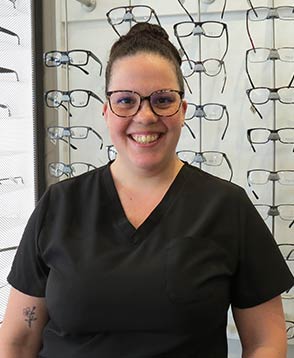Living in the Lower Mainland, we are no strangers to rain. From late autumn through spring, Vancouver and the Fraser Valley are often blanketed in grey skies and heavy downpour. So that makes the question seem counterintuitive, doesn’t it? How can you suffer from dry eye syndrome when you live in one of the wettest climates in Canada?
Well, if your eyes feel gritty, tired, or unexpectedly watery despite the damp weather outside, you aren’t imagining it. In fact, the unique climate of British Columbia’s West Coast, and how we live during those rainy months, can create a “perfect storm” for dry eye symptoms.
The “Rainy City Paradox”: Why Wet Weather Causes Dry Eyes
While outdoor humidity in the Lower Mainland is high, the following environmental factors associated with our rainy season are often the real culprits for ocular discomfort.
1. The Indoor Heating Effect
When the rain starts falling in Vancouver, the thermostats indoors go up. Central heating systems (forced air), electric baseboards, and car heaters effectively strip moisture from the air indoors.
The Science: While it might be 90% humidity outside, your office or living room may drop to desert-like humidity levels (often below 30%) due to heating. This dry indoor air causes your tear film, the thin layer of fluid coating your eye, to evaporate much faster than your body can replenish it.
2. Wind and Cold Air
Our rainy systems often come with blustery winds. Which means even a short walk on the White Rock pier or a dash to the car in Chilliwack can expose your eyes to cold wind, which physically dries out the ocular surface and disrupts the lipid (oil) layer of your tears.
3. Mould and Allergens
Rain breeds mould. And in the damp Lower Mainland climate, mould spores are a common allergen. Allergic reactions can trigger inflammation in the eyes, worsening existing dry eye symptoms and causing redness and itching.
Recognizing the Symptoms of Dry Eyes
Dry eye disease isn’t just about “dryness.” It presents in various ways that can affect your vision and quality of life.
For example, one of the most common complaints we hear is, “My eyes aren’t dry; they won’t stop watering!” This is actually a classic symptom.
When your eyes get too dry, your brain sends a panic signal to flood the eye with emergency reflex tears. However, these tears are mostly water and lack the essential oils needed to coat the eye, so they simply run down your cheeks, leaving the eye surface still irritated.
Other common symptoms of dry eyes in the winter include:
- A gritty, sandy, or scratching sensation.
- Redness and burning.
- Sensitivity to light (photophobia).
- Fluctuating vision (vision that blurs but clears when you blink).
- Eye fatigue, especially after computer use.
What You Can Do: At-Home Relief
Managing dry eyes often requires a multi-faceted approach. Here are three expert-approved habits you can start today:
1. Humidify Your Home
Combat the drying effects of indoor heating by using a humidifier in the rooms you use most, such as your bedroom or home office. Aim for an indoor humidity level of roughly 40-50%.
2. Follow the 20-20-20 Rule
We spend more time indoors on screens when it’s raining. Digital eye strain reduces your blink rate by up to 60%. Every 20 minutes, look at something 20 feet away for 20 seconds to allow your eyes to reset and blink naturally.
3. Boost Your Omega-3s
A diet rich in Omega-3 fatty acids (found in salmon, walnuts, or high-quality supplements) helps improve the quality of the oil in your meibomian glands, preventing your tears from evaporating too quickly.
When Home Remedies Aren’t Enough: Advanced Treatments
For many patients, lifestyle changes and over-the-counter drops provide only temporary relief.
If you experience chronic dry eye symptoms, the root cause is often Meibomian Gland Dysfunction (MGD), which involves blockages in the oil-producing glands of your eyelids.
When dealing with such conditions, working with an optometrist becomes critical.
For example, at Crystal Vision & Better Hearing, we offer expert-led OptiLIGHT treatments that target the root cause of dry eye, rather than just its symptoms.
OptiLIGHT is the first and only light-based therapy FDA-approved for the management of dry eye disease.
- How it works: OptiLIGHT uses precise pulses of light to reduce inflammation, eliminate abnormal blood vessels, and restore the function of your meibomian glands.
- The Result: This breaks the cycle of dry eye inflammation, allowing your eyes to produce their own high-quality tears again. It is a safe, non-invasive, and comfortable procedure available at our clinics.
Keep Your Eyes Protected During the Winter
As we head deeper into the rainy season across the Lower Mainland, remember that dry eye symptoms are incredibly common, even when it’s pouring outside.
The combination of cold outdoor winds and dry indoor heating creates a challenging environment for your eyes, making maintenance and consistency key to staying comfortable.
By understanding the symptoms and what you can do (as we outlined), you can take the right steps to keep your eyes clear and comfortable all season long.



















